This sourdough sandwich bread is soft, naturally leavened, and perfect for toast, sandwiches, etc.
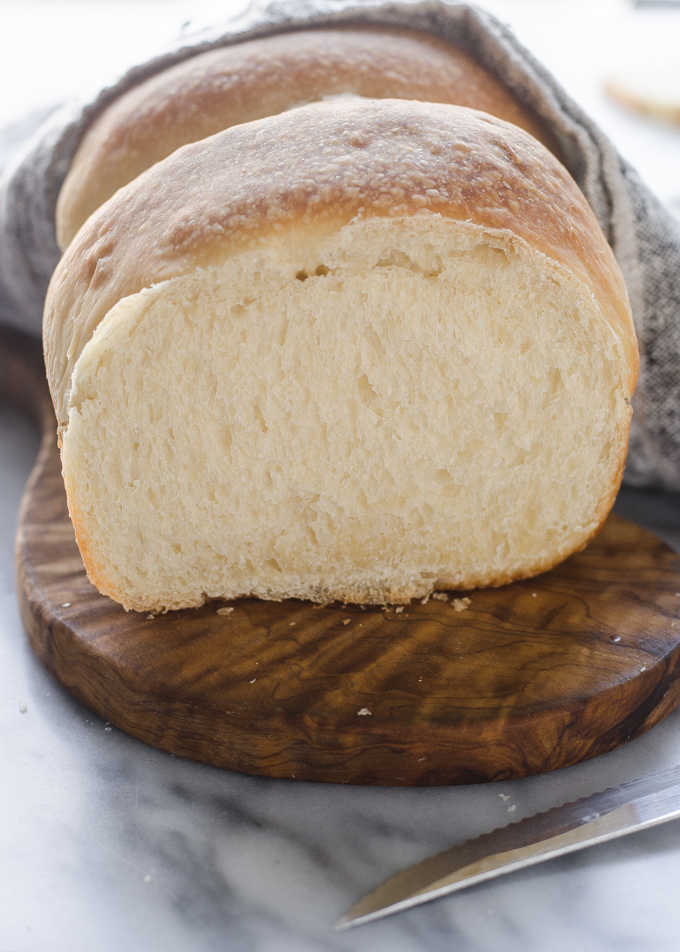
My first love with sourdough was my homemade artisan sourdough bread – that recipe makes some out-of-this-world-good bread. I truly think that every sourdough baker should make a rustic loaf like that at least once.
That loaf is insanely delicious. BUT…it isn’t always the most practical. All those beautiful little air bubbles don’t always make for the best toast or sandwich. When you don’t want to have to tear at a sandwich with your teeth, or when you don’t want the melted butter to run out the bottom of your toast, you make this sourdough sandwich bread.
This loaf is soft and beautiful and delicious. The perfect vehicle for any sort of topping you want to throw at it. Let’s dive in and see how it’s made:
How to Make Sourdough Sandwich Bread
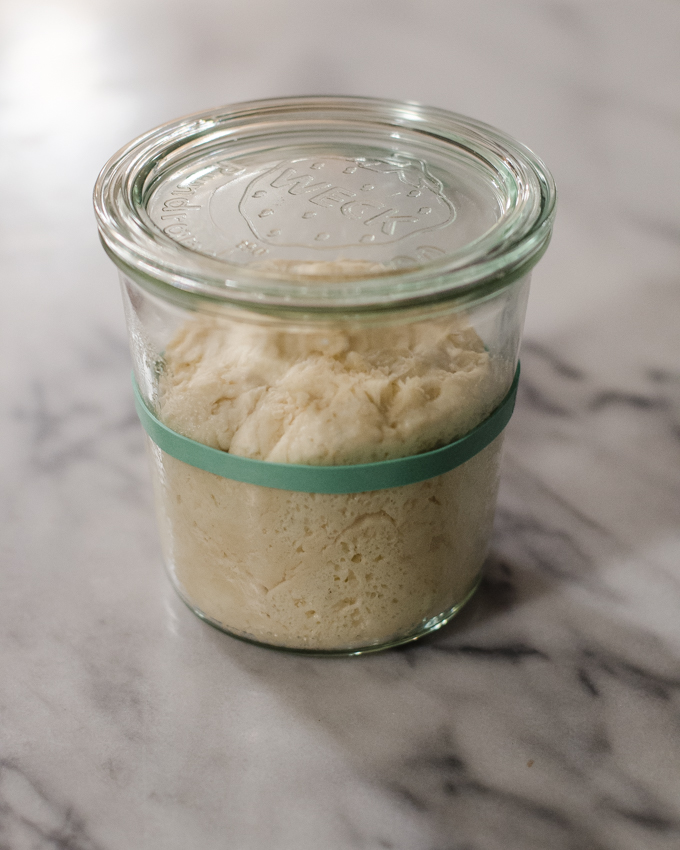
First, we need to make the leavain. What is a levain, you ask? It’s basically a sourdough starter that you mix up specifically for your recipe. It’s the leaven that will make your bread rise.
Unlike my artisan sourdough bread recipe, we’re noting using a wet, 100% hydration levain. This one’s more like a stiff dough, and it contains milk! Mix it together and wait for it to ripen and rise.
Mixing the Dough:
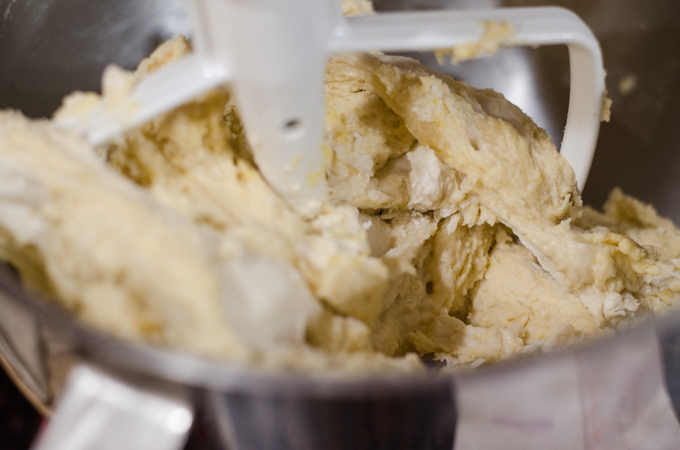
Next, you add all of the ingredients (including the levain) except for the salt and butter to the bowl of a stand mixer. Mix with the paddle attachment just until everything is combined. Let rest (autolyse) for 30 minutes.
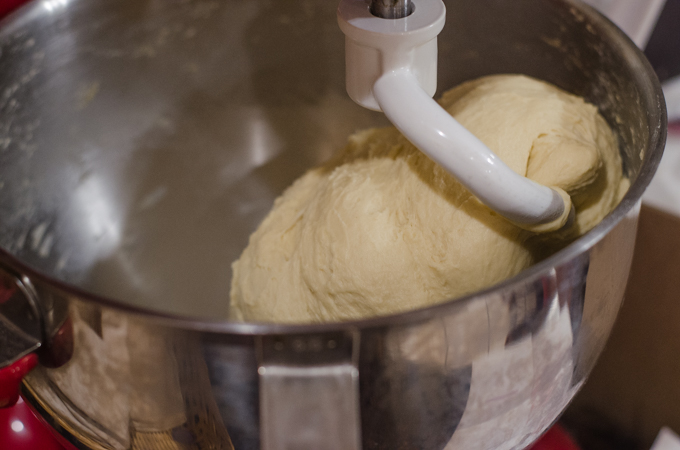
Switch to the dough hook. Add the salt and knead the dough until it starts to come together, about 3 minutes.
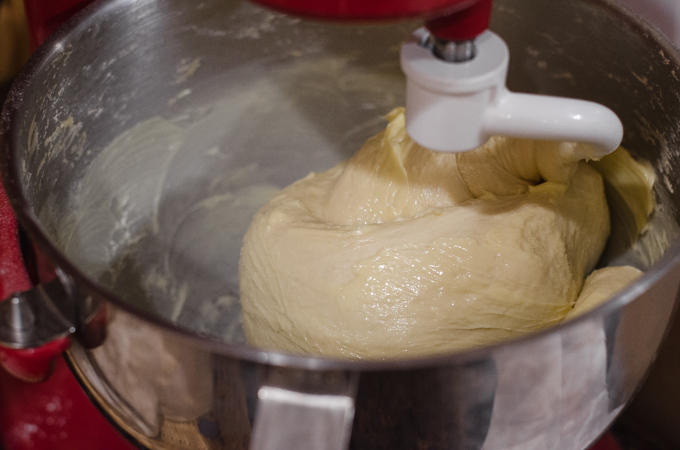
With the mixer running, gradually add the butter, mixing well after each addition. At first it will seem like a greasy mess. Just keep going and the butter will eventually absorb into the dough.
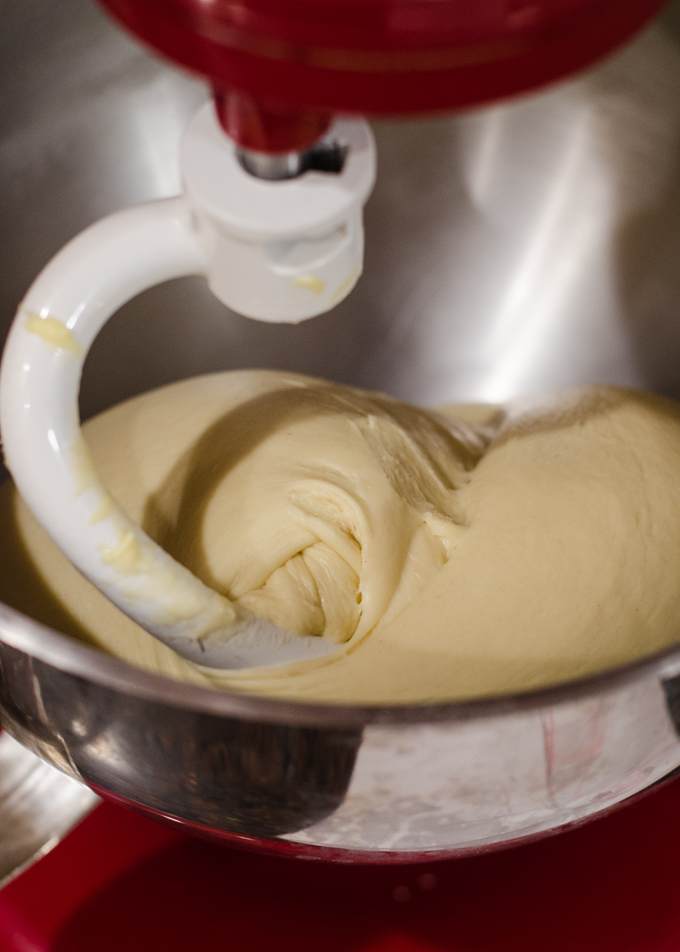
Keep kneading until the dough is beautifully smooth and passes the windowpane test. Be patient – it can take quite a while for the gluten to develop enough!
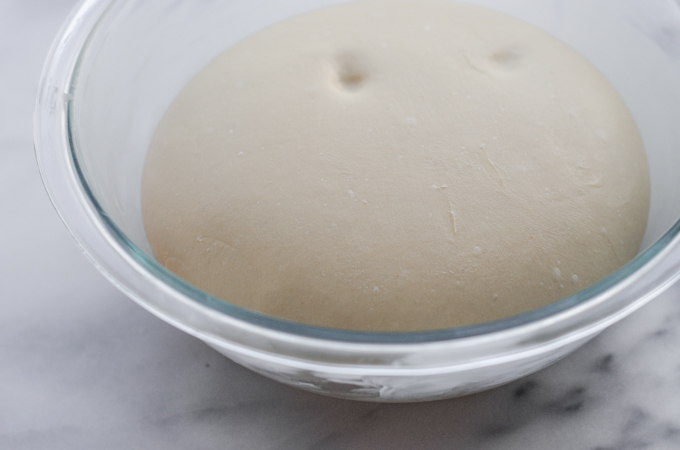
At this point you have a couple of options:
- You can let the dough rise at room temperature for 2 hours, then place it in the refrigerator overnight.
- If your kitchen is quite cold like mine is in the winter/spring, you can do the bulk rise overnight at room temperature. If your kitchen is quite warm, I recommend using the first method.
Forming the Loaf:
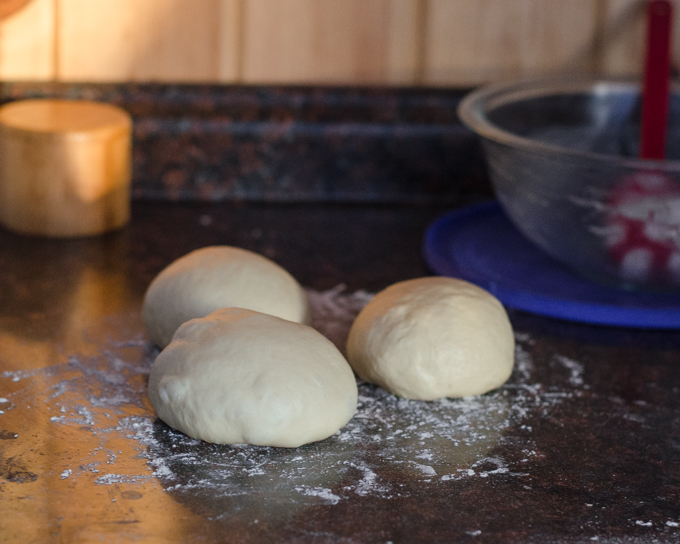
The next day, divide your dough into 3 equal parts. Cover with a damp tea towel and let rest for 1 hour.
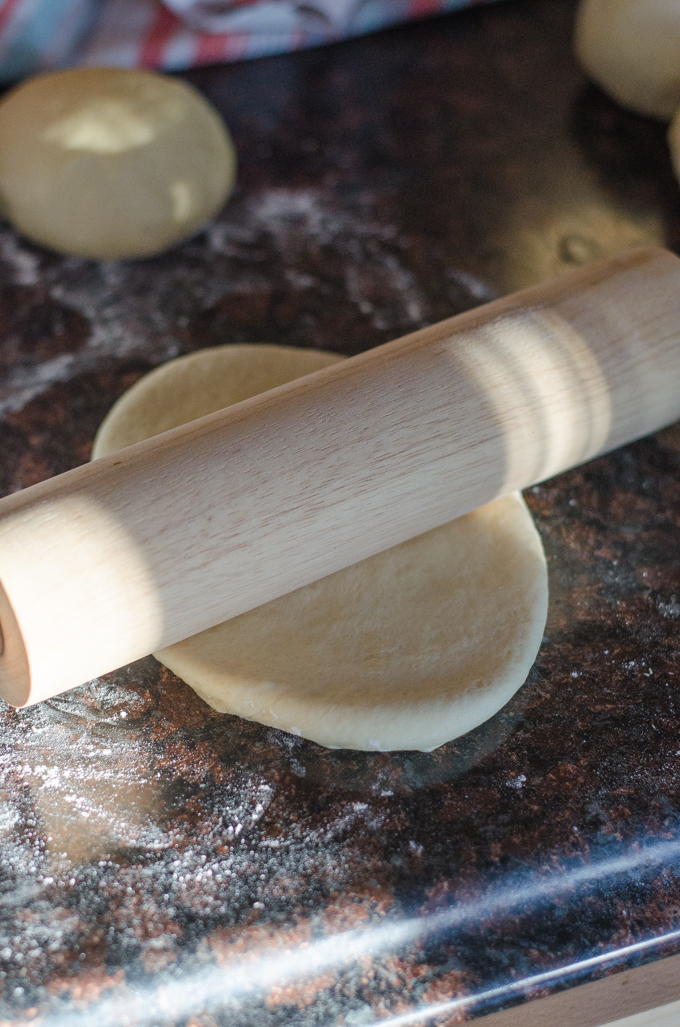
Roll the balls out into ovals.
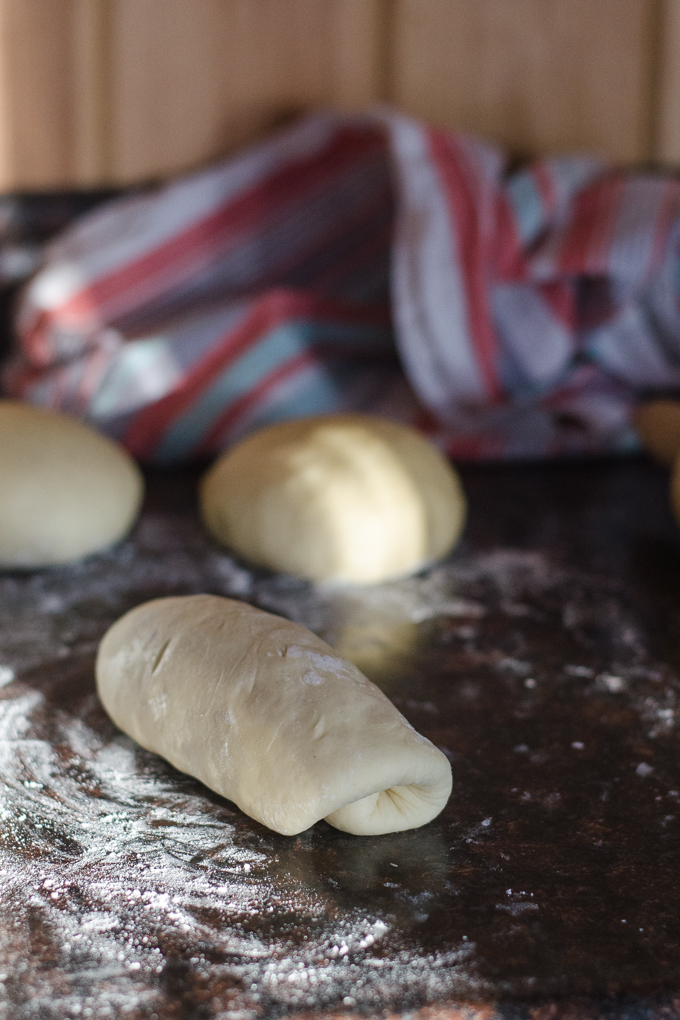
Now roll each oval up jelly-roll-fashion.

Flatten the roll back out into an oval again along the seam.
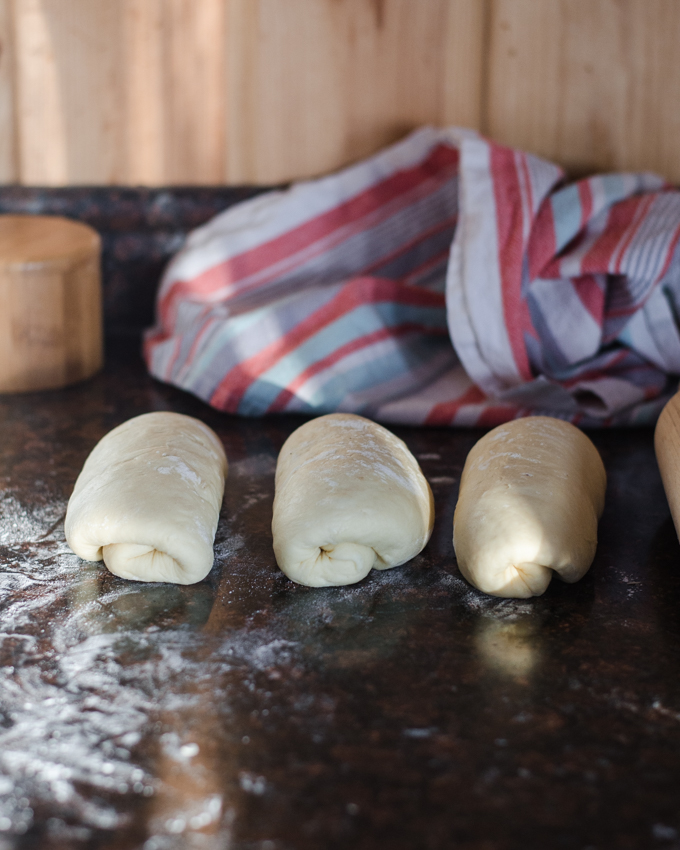
Roll the dough back up one more time like a jelly-roll.
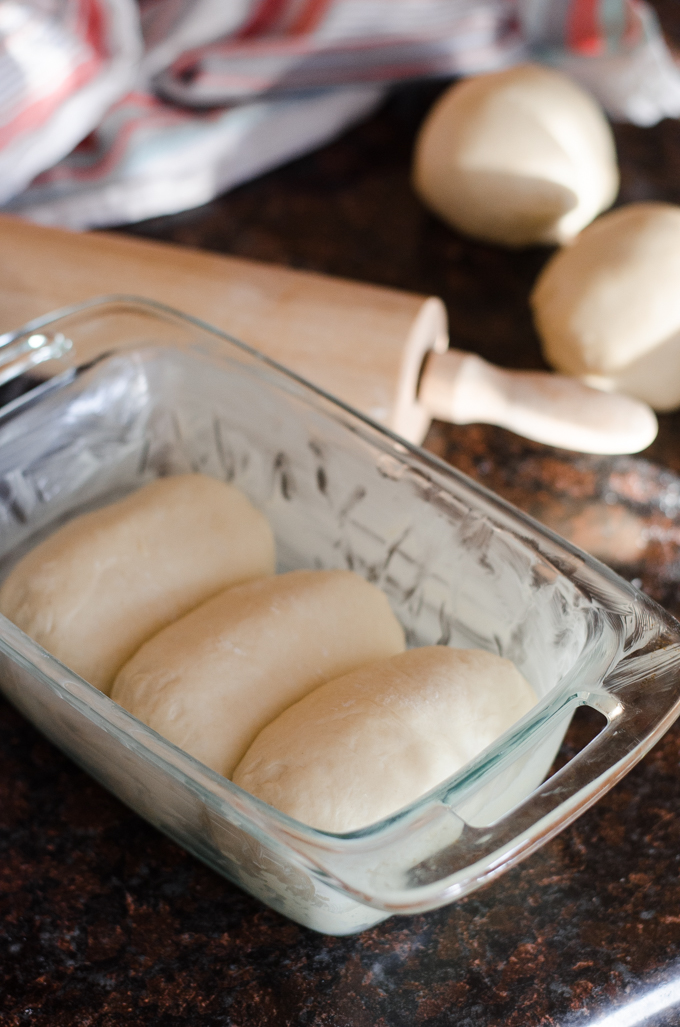
Put the rolls into a buttered loaf pan, seam side down.
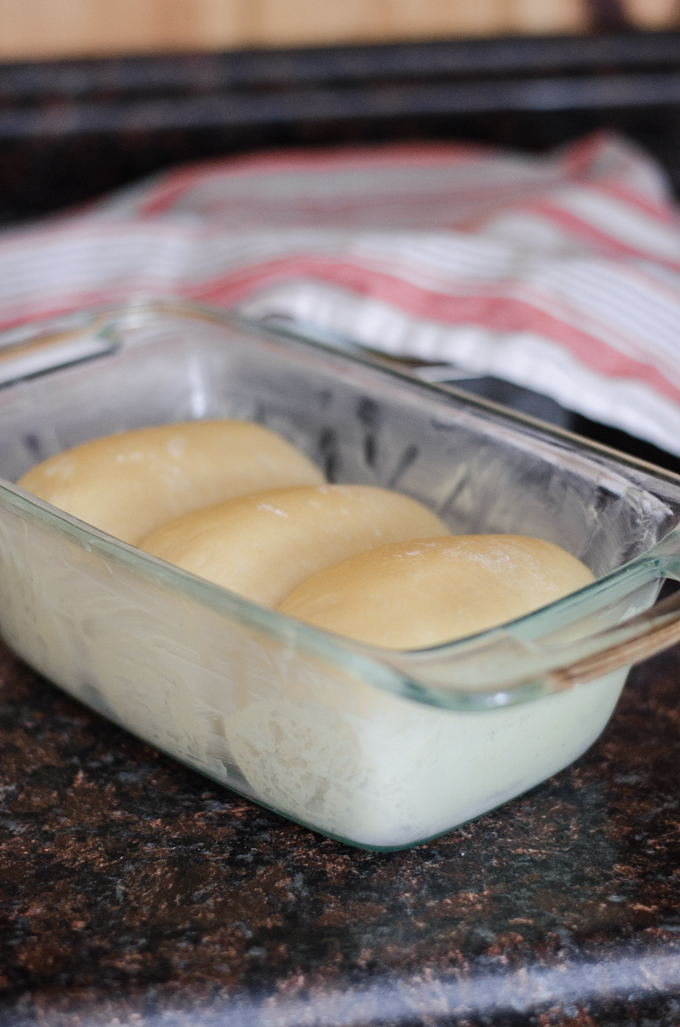
Cover with a damp tea towel and allow to rise at room temperature for 6 hours.
Baking Sourdough Sandwich Bread:
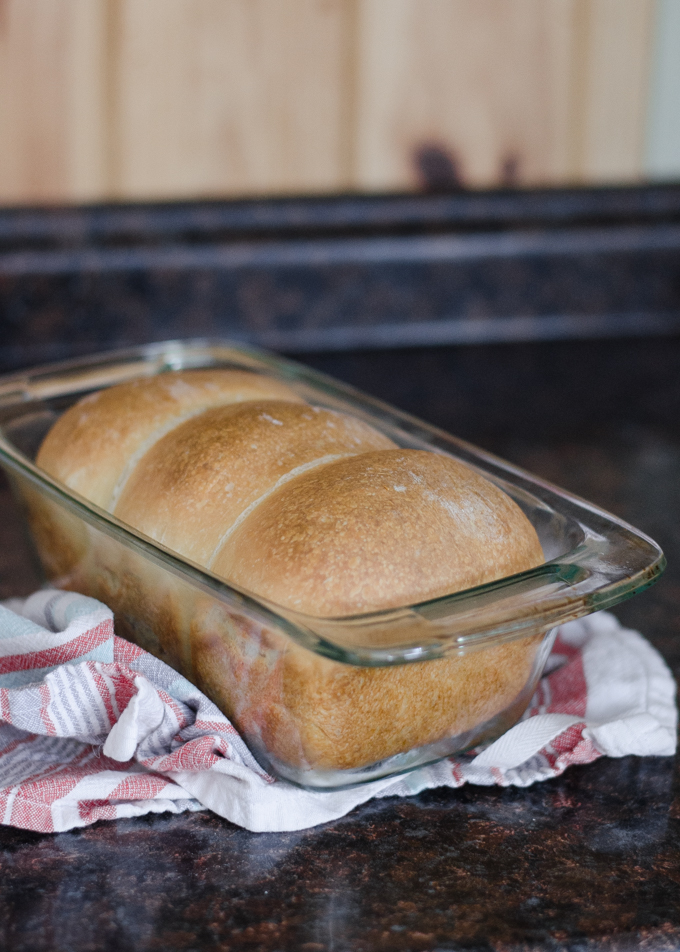
Bake in a hot oven for about 40 minutes. You want the dough to reach an internal temperature of about 195-200° F.
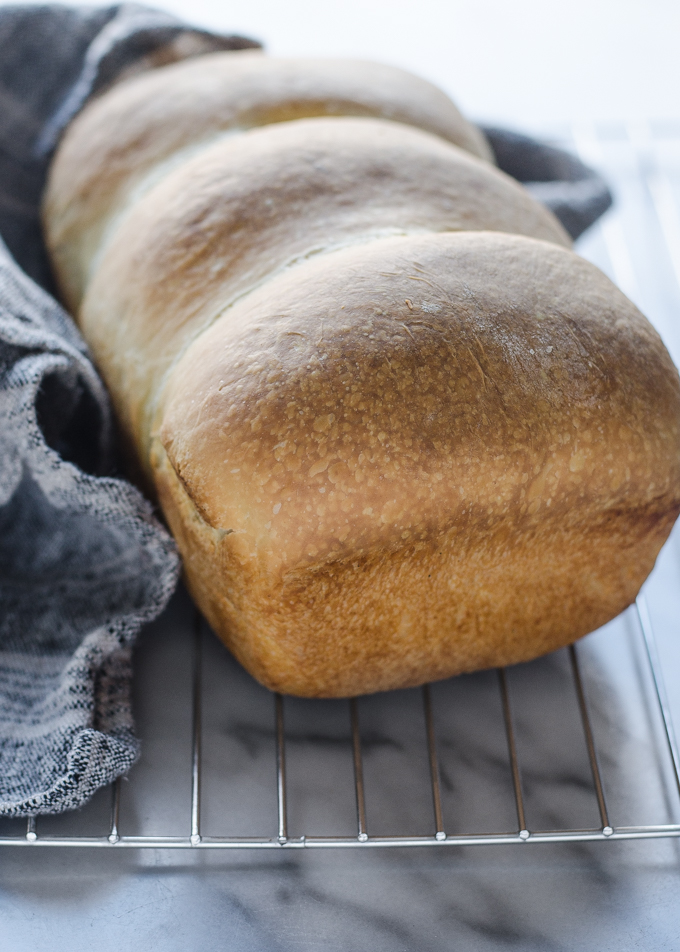
Transfer to a wire rack to cool.
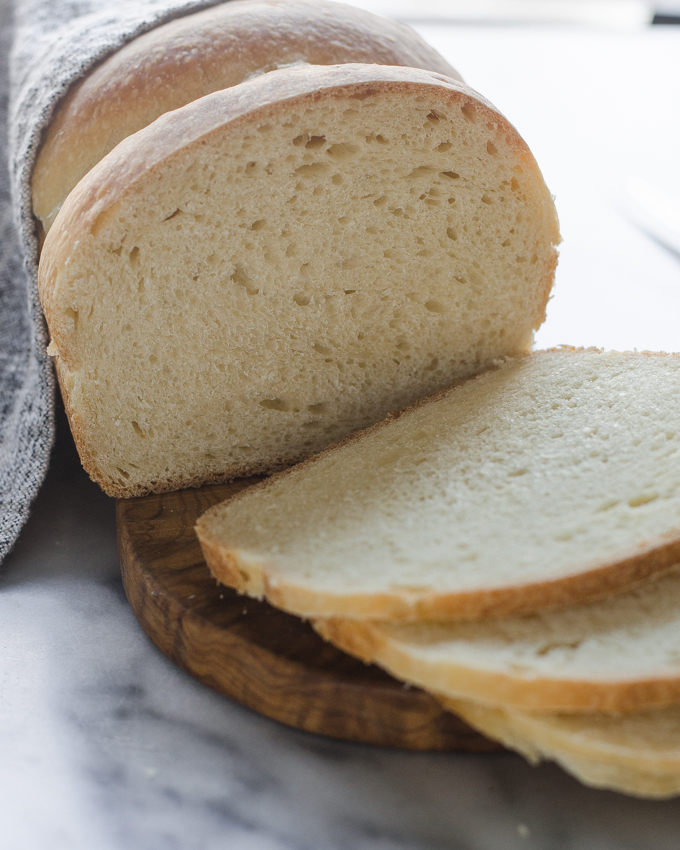
Try your best to wait until the loaf has completely cooled to slice into it.
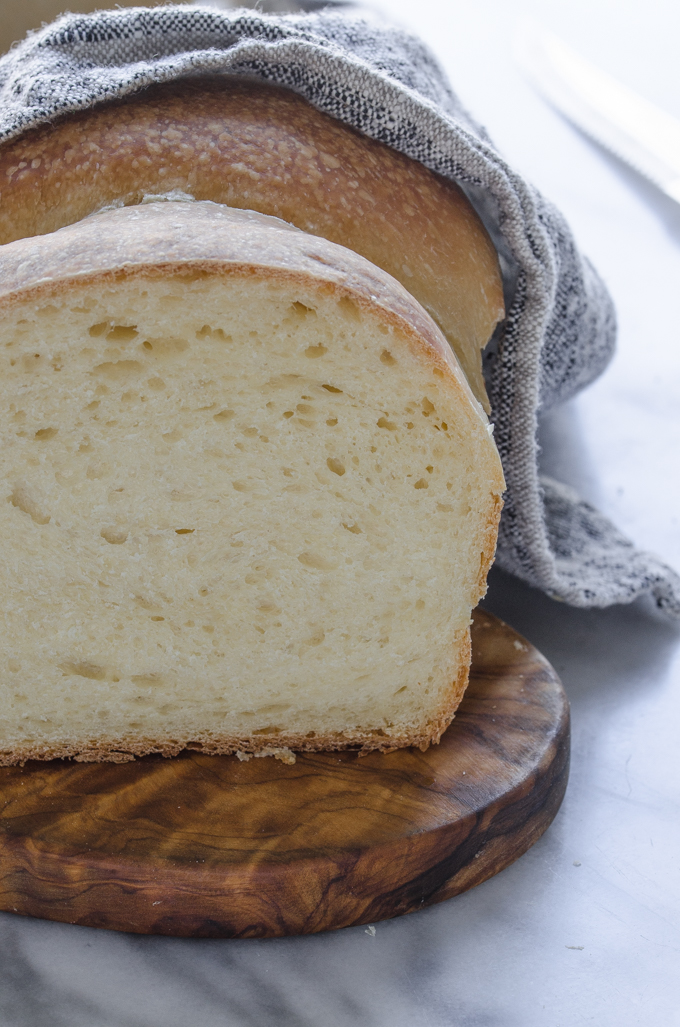
The first time I made this bread, we scarfed down about half a loaf in one sitting. Reuben devoured slice after slice, even though he isn’t a big bread fan! It’s that good.
Notes:
- I scaled up the original recipe (BTW, go follow Cook Til Delicious) to better fit a standard American loaf pan. The original amount was for a pullman loaf pan, which I don’t own.
- I have made this recipe with and without the sugar. Of course it’s absolutely delicious with the sugar, but it’s still really good without it.
- If you don’t have any bread flour on hand, you can still totally pull off this loaf. I’ve made it with part bread flour, and also with all AP flour.
Here are some ideas for what to make with your Sourdough Sandwich Bread:
- Ricotta Avocado Toast
- Cream Cheese and Chive Sandwiches
- French Toast
- Bacon and Brie Grilled Cheese
- Bacon, Avocado, and Tomato Sandwich
Here’s a video demonstration of the process:
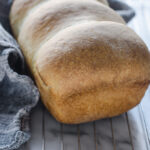
Sourdough Sandwich Bread
This sourdough bread is soft and light - perfect for making sandwiches or toasting!
Ingredients
For the Levain/Starter:
- 23 grams 100% hydration sourdough starter (see note)
- 38 grams whole milk
- 70 grams bread flour (can also use AP flour)
For the Final Dough:
- all of the levain/starter
- 173 grams all-purpose flour
- 173 grams bread flour (or more AP flour)
- 1 whole egg
- 1 egg yolk
- 168 grams whole milk
- 43 grams sugar, optional
- 8 grams unrefined salt (I used Himalayan pink salt)
- 43 grams butter, softened
Instructions
For the Levain/Starter:
-
Mix together all of the levain ingredients in a jar. Let sit at room temperature to mature and rise, about 8 hours.

For the Final Dough:
-
Place all of the dough ingredients (including the levain) except for the salt and butter in the bowl of stand mixer fitted with the paddle attachment. Mix on low speed until it comes together in a shaggy dough. Let rest (autolyse) for 30 minutes.

-
Switch to the dough hook. Sprinkle in the salt and knead for 3-5 minutes, or until the dough starts to come together.

-
Add the butter gradually, mixing well after each addition. It will start out greasy, but the butter will eventually absorb into the dough. Continue kneading until the dough passes the windowpane test, about 10 minutes.

-
Place the dough in a lightly greased bowl, then turn to grease all sides of the dough. Cover tightly and allow to rise at room temperature for 2 hours. Place in the refrigerator to rise overnight.

-
The next day, divide the dough into 3 pieces and form into balls. Place on a lightly floured surface, cover with a damp tea towel, and allow to rest for 1 hour.

-
Roll each ball into an elongated oval, then roll each one up jelly-roll-fashion. Allow to rest for 10 minutes. Roll them out into an oval again along the seam, then roll each one up like a jelly roll once more. Transfer the rolls to a buttered 9x5-inch loaf pan. Cover with a damp tea towel and allow to rise at room temperature for about 6 hours. At that point the dough should have puffed up and filled the pan about 2/3-3/4 of the way.

-
30 minutes before the loaf is ready to bake, preheat your oven to 400 degrees F. Place the risen loaf into the hot oven and bake for 20 minutes. Lower the oven temperature to 350 degrees F and continue to bake for 15-20 minutes, or until the loaf reaches an internal temperature of 195-200 degrees F.

-
Transfer to a wire cooling rack and allow to cool completely before slicing (if you can).

Recipe Notes
- 100% hydration starter means a starter that has been fed with equal weights (not volumes) of water and flour and allowed to rise until doubled, about 6-12 hours depending on the temperature of your kitchen.
- All of the mixing can be done by hand if desired.
- Recipe adapted from Cook Til Delicious

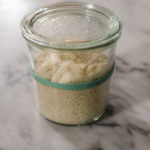
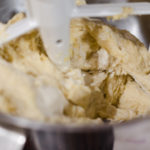
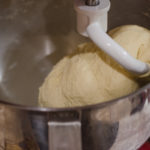
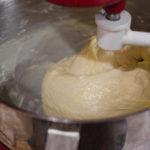
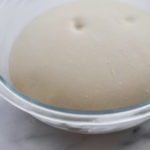


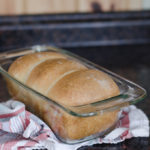
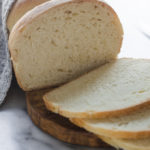
Marianne
Wednesday 29th of December 2021
I baked this yesterday and it tasted delish...but, I think my kitchen, at 66°F, may have been too cool since it didn't rise too much over 6 hrs. (Please comment about room temp.) Next time, I plan to use my Brod & Taylor proofer my familygave me for Christmas. At what temp would you recommend I put it?
Erica Kastner
Thursday 6th of January 2022
It could take up to 8 hours in a chilly house - this is what I find! I would say set your proofer to about 75-78 degrees F.
Margaret
Wednesday 25th of August 2021
Hi
May I ask why the dough is put in the tin in 3 lots and not just the entire dough?
Thankyou
Erica Kastner
Wednesday 25th of August 2021
It's mostly to look beautiful. If you prefer you can definitely just do the entire dough!
Carl
Sunday 16th of May 2021
As a relatively inexperienced baker, this is by far the most complicated bake I've ever attempted. At pretty much every stage I was convinced that I had messed up somehow. I was determined to persevere however and while the end result could have been better if was one of the most delicious breads I have ever baked and I will certainly be trying it again in order to perfect it
Erica Kastner
Monday 17th of May 2021
Aw, so happy that it turned out delicious for you!
Gail
Wednesday 5th of May 2021
Could I use part whole wheat flour and part bread flour?
Gail
Thursday 29th of April 2021
Wondered if I can use all bread flour and no AP flour.
Erica Kastner
Friday 30th of April 2021
You should be able to use all bread flour!